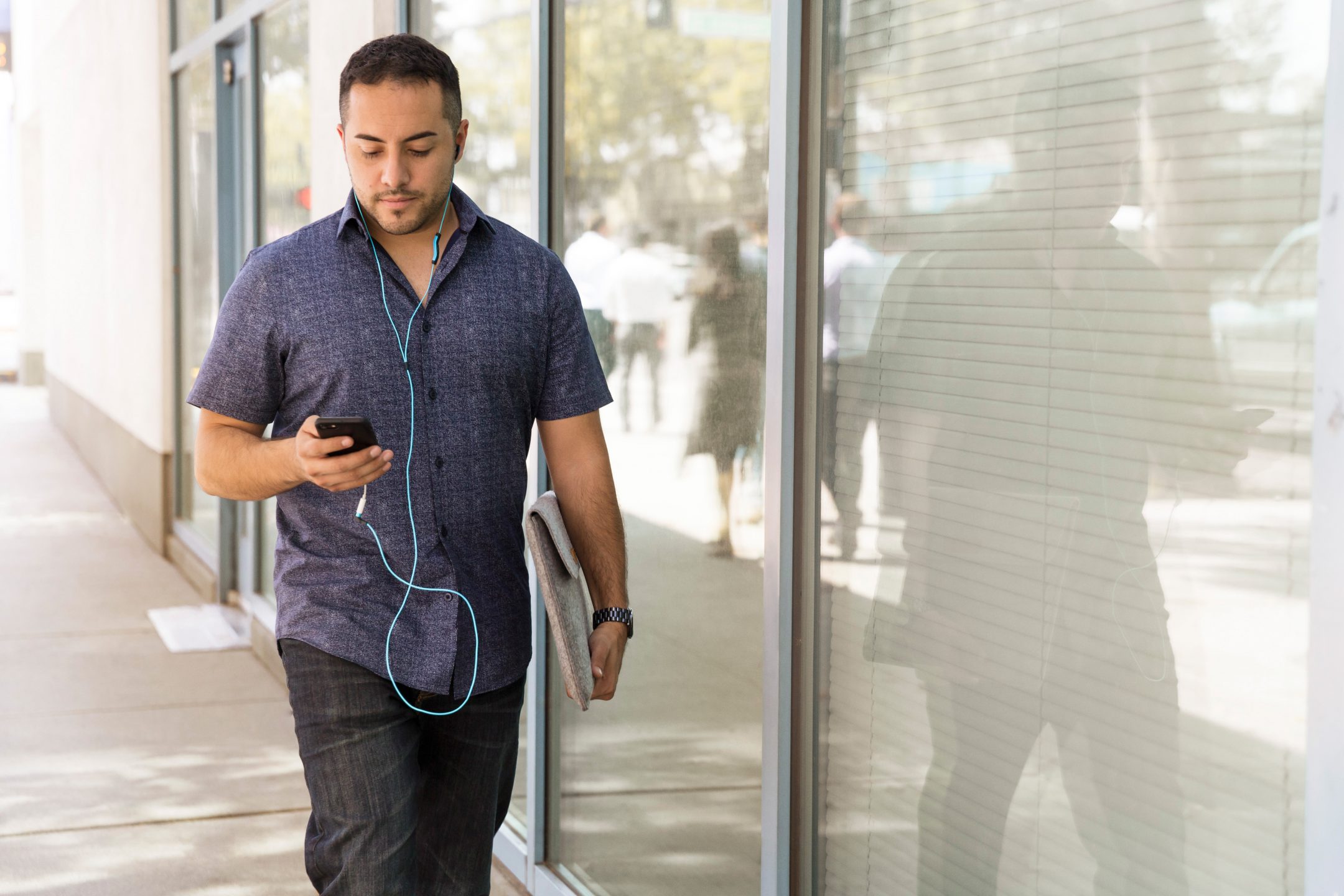We are all aware of the dangers of distracted driving, but it is becoming commonplace in every busy city these days to see pedestrians walking with their eyes glued to their mobile phones, and even crossing busy streets without looking up. This is often described as “distracted walking”.
Walking while distracted by our smart phones can lead to injuries, including minor sprains, bruises and cuts, concussions, broken bones and more serious injuries in extreme cases where pedestrians have walked into traffic, stepped off train platforms, and fallen down flights of stairs.
A study by State Farm (now Desjardins Insurance Agents) in 2016 found that 40% of Canadians surveyed participate in texting while walking. The study surveyed 3,000 respondents of driving age. Of those surveyed, 45% admitted to wearing headphones while walking and 70% of those surveyed admitted to jaywalking while being distracted.
Distracted walking is becoming so problematic that policymakers across both Canada and the United States have considered creating laws aimed at fining pedestrians who are found using their cell phones while crossing the road.
In fact, in Honolulu in 2017 a “Zombie Law” was enacted authorizing police to fine pedestrians for crossing the road while using their cell phones.
Lawmakers in Vancouver, Toronto, and Calgary have expressed interest in imposing fines or bans on distracted walking. However, laws of this nature have yet to be introduced in any city in Canada.
LATEST STUDY REGARDING DISTRACTED WALKING
A study by researchers at the University of British Columbia (“UBC”) has found that individuals walking while focused on their mobile phones move slower than other pedestrians and are less steady on their feet.
The study used automated video analysis to examine the movements and walking behaviour of 357 pedestrians at a busy four-way intersection in Kamloops, British Columbia, over a two-day period of time.
The research found that more than a third of pedestrians were distracted by their mobile phones, and those individuals had more trouble maintaining their walking speed and took longer to cross the road, thus increasing the potential for accidents with motor vehicles.
Pedestrians who were using their smart phones to text or read while walking, according to the study, took shorter steps without altering how long each step took. Pedestrians who were talking on their smart phones were found to take slower steps, but didn’t alter the length of each stride. Pedestrians who were distracted by texting and reading were found to have more unstable movements in comparison to other pedestrians.
Tarek Sayed, professor of civil engineering at UBC and a co-author of the study, stated:
This can have applications for safety. They can have less reaction time, they cannot focus on the road, and there are things that need to be done to improve the safety of distracted pedestrians.
Mohamed Zaki, a research associate in the department of civil engineering at UBC and co-author stated:
When it came to interactions with vehicles, distracted pedestrians acted differently than those who were not distracted. To avoid oncoming vehicles, they reduced their speeds by adjusting their step frequency, while non-distracted pedestrians adjusted both their step frequency and the length of their steps.
The findings of this study will be used in the development of driverless cars. It will be essential to program autonomous vehicles to recognize distracted pedestrians from their walking patterns in order to anticipate their behaviours and take the appropriate evasive actions to avoid an accident.
PEDESTRIANS MUST EXERCISE DUE CARE
All pedestrians are obligated to demonstrate due care while using the road. As a pedestrian, the Use of Highway and Rules of The Road Regulation (section 92) requires you to yield the right of way to a vehicle if you are not in a crosswalk.
The law tends to favour pedestrians who are injured in motor vehicle accidents. However, courts will be less forgiving if you are found to be using your cell phone while crossing the road.
Talking on the phone, texting or surfing the internet on your mobile phone while walking may seem harmless, but performing these activities while walking is extremely distracting and can result in very serious injuries. A pedestrian may be found partially at fault for a motor vehicle accident if it can be proven that the pedestrian was distracted at the time of the accident.
TIPS FOR PEDESTRIANS TO AVOID INJURIES
Here are just a few simple tips to avoid distracted walking and keep you safe from injury:
- Always be aware of your surroundings and stay alert, especially when crossing the road;
- Maintain eye contact with drivers and wait until vehicles have stopped before crossing the road;
- Obey all traffic signals;
- Only cross the road at designated crossing points;
- Wear light-coloured or reflective clothing when walking in low light or poor weather conditions;
- Unplug – don’t be a distracted walker, remove your headphones and put your phone away when you’re crossing the road;
- Always use a sidewalk when one is available;
- Watch for vehicles turning as you cross an intersection;
- Make sure all vehicles have seen you and will stop for you before proceeding across the road; and
- If you absolutely need to use your phone, stop walking.
If you or a loved one were involved in a motor vehicle accident as a pedestrian, it is imperative that you have an experienced personal injury lawyer to help you determine fault for the accident. Do not hesitate to contact the experienced and award winning personal injury lawyers at Cuming & Gillespie LLP. Please contact our office for a free case evaluation either online or by calling 403-571-0555. We look forward to helping you obtain the compensation that you deserve.

